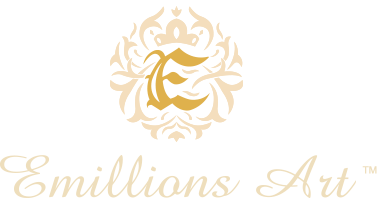“Provenance” refers to the documented history and chain of ownership of an artwork from its creation to the present day. Provenance research involves systematically investigating and documenting an artwork’s ownership history, including the names of previous owners, dates of acquisition and sale, locations, and any relevant historical or archival records.
Provenance research aims to establish an artwork’s authenticity, legitimacy, and legal ownership and provide insights into its historical context and cultural significance.
Key elements and concepts associated with provenance in the academic context include:
Authenticity and Attribution: Provenance research plays a crucial role in verifying the authenticity and attribution of an artwork by tracing its ownership back to the artist’s creation. A strong, well-documented provenance can enhance the confidence in an artwork’s authenticity.
Legal and Ethical Considerations: Provenance research is essential for confirming an artwork’s legal and ethical ownership. It helps ensure that an artwork has not been stolen, looted, or subject to illegal transactions, which can have legal and moral implications.
Cultural and Historical Context: Provenance information can shed light on an artwork’s historical and cultural context. It may reveal the roles an artwork played in specific collections, exhibitions, or artistic movements.
Exhibition and Publication History: The provenance of an artwork may include its history of public display in exhibitions and its publication in art literature. This information can enhance the understanding of an artwork’s reception and impact on the art world.
Documentation and Archival Research: Provenance research often involves meticulous investigation of archives, auction records, estate documents, correspondence, and historical records to compile a comprehensive history of an artwork’s ownership.
Provenance Research Challenges: Provenance research may encounter challenges, such as gaps in the historical record, incomplete documentation, or disputes over ownership, which require careful and thorough analysis to resolve.
Expertise and Collaboration: Provenance research is typically conducted by experts, including art historians, curators, and provenance researchers, who use their knowledge of art history and archival research techniques. Collaboration with archives and institutions is often necessary.
Art Market and Value: An artwork’s provenance can significantly influence its market value. A documented history of prestigious ownership or exhibition can increase an artwork’s desirability and price.
Due Diligence: Provenance research is considered an essential part of due diligence when buying, selling, or valuing artworks, particularly for museums, galleries, and collectors.
Provenance research, a favorite activity of the Emillions Art team, is integral to fine art’s academic and professional study, contributing to understanding an artwork’s historical context and significance. It plays a crucial role in ensuring the integrity of the art market and preserving cultural heritage by addressing issues related to authenticity, ownership, and cultural property. Academic experts and art professionals rely on provenance research to support the responsible stewardship and study of artworks.



